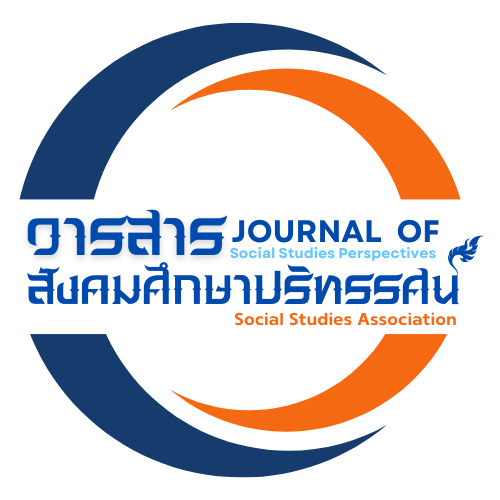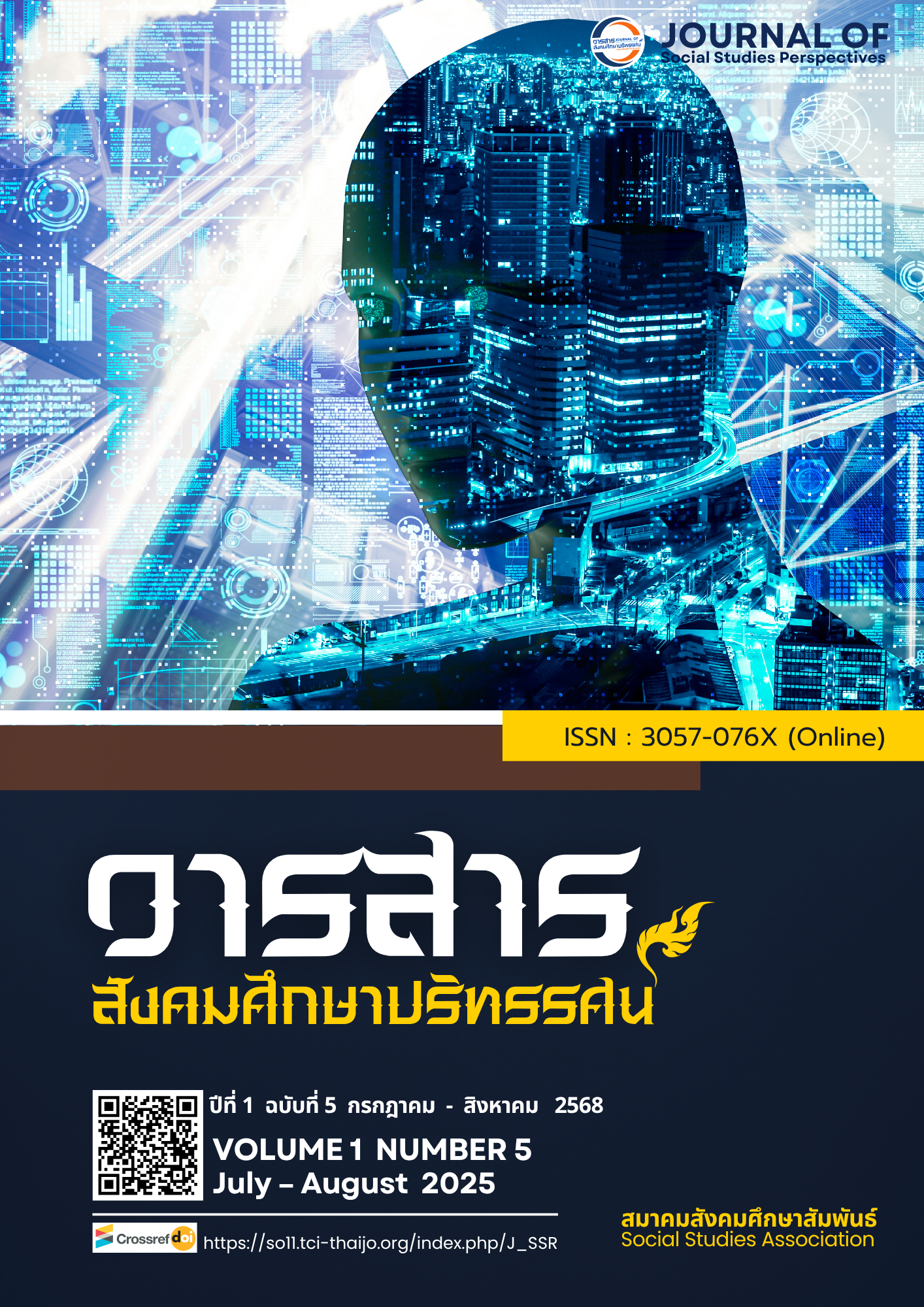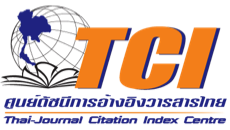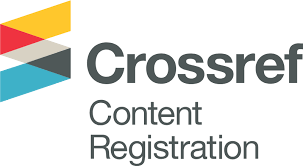การออกแบบและนำเสนอสื่อการสอนอย่างสร้างสรรค์ด้วยเอไอวีพิคเพื่อเสริมสร้าง ทักษะพุทธิพิสัยของผู้เรียน
DOI:
https://doi.org/10.64186/jsp1553คำสำคัญ:
สื่อการสอน, เอไอวีพิค, ทักษะพุทธิพิสัยบทคัดย่อ
บทความวิชาการนี้เป็นการศึกษาการออกแบบและนำเสนอสื่อการสอนอย่างสร้างสรรค์โดยใช้เทคโนโลยีปัญญาประดิษฐ์ผ่านแพลตฟอร์มออนไลน์ เอไอวีพิค (AI Wepik) เพื่อเสริมสร้างทักษะพุทธิพิสัยของผู้เรียนในศตวรรษที่ 21 โดยทักษะพุทธิพิสัยครอบคลุมการพัฒนาความรู้และการคิดในระดับสูง เช่น ความจำ ความเข้าใจ การวิเคราะห์ และการประเมินผล การใช้เอไอวีพิค ซึ่งขับเคลื่อนด้วยเทคโนโลยี AI ช่วยให้ผู้สอนสามารถออกแบบสื่อการสอนที่มีคุณภาพและความสวยงาม โดยเอไอวีพิค มาพร้อมกับคุณสมบัติหลากหลาย เช่น การปรับแต่งเทมเพลตที่หลากหลายตามความต้องการของเนื้อหา ฟังก์ชันการปรับแต่งที่ยืดหยุ่น และการใช้อัลกอริธึมเพื่อเสนอการออกแบบที่เหมาะสม นอกจากนี้ เอไอวีพิคยังสามารถสร้างภาพประกอบและกราฟิกอย่างรวดเร็ว สนับสนุนการเลือกองค์ประกอบของสื่อที่ดึงดูดความสนใจของผู้เรียนและสอดคล้องกับเนื้อหา อีกทั้งยังช่วยกระตุ้นการคิดวิเคราะห์ สังเคราะห์ ความคิดสร้างสรรค์ และการคิดเชิงนวัตกรรมของผู้เรียน ซึ่งเป็นสิ่งสำคัญในยุคที่เทคโนโลยีสารสนเทศเปลี่ยนแปลงอย่างรวดเร็ว นอกจากนี้ การนำเทคโนโลยี AI มาใช้ในการออกแบบสื่อช่วยให้เกิดความสะดวกและยืดหยุ่นในการนำเสนอเนื้อหาที่ดึงดูดความสนใจ ช่วยให้ผู้เรียนมีส่วนร่วมในการเรียนรู้มากขึ้น และเพิ่มประสิทธิภาพของการจัดการเรียนรู้ สื่อการเรียนรู้
เอกสารอ้างอิง
Adobe. (2024, December 22). Creating stunning graphics with Adobe Spark. https://spark.adobe.com/
Anderson, L. W., Krathwohl, D. R., Airasian, P. W., Cruikshank, K. A., Mayer, R. E., Pintrich, P. R., Raths, J., & Wittrock, M. C. (2001). A taxonomy for learning, teaching, and assessing: A revision of Bloom’s taxonomy of educational objectives. Pearson.
Appscribed. (2024, December 22). Wepik AI: Features, pricing, alternatives, and more. https://www.appscribed.com
Bamroongcheep, U. (2023). Creative innovation for learning towards digital citizenship. Chonburi Publishing.
Bloom, B. S. (Ed.), Engelhart, M. D., Furst, E. J., Hill, W. H., & Krathwohl, D. R. (1956). Taxonomy of educational objectives, handbook I: The cognitive domain. David McKay Co Inc.
Brown, T. (2009). Change by design: How design thinking creates new alternatives for business and society. Harper Business.
Canva. (2024, December 22). Canva: Design, photo & video editing. https://www.canva.com/
Churches, A. (2008, December 22). Bloom's digital taxonomy. https://www.pdst.ie/sites/default/files/BloomDigitalTaxonomy-AndrewChurches.pdf
Institute for the Promotion of Teaching Science and Technology. (2024, January 2). Background of design thinking. https://designtechnology.ipst.ac.th/
Mayer, R. E. (2009). Multimedia learning. Cambridge University Press.
Ministry of Digital Economy and Society. (2019, January 9). Ministry of Digital Economy and Society. http://lms.nhrc.or.th/ulib/dublin.php?ID=10558
Morningdough. (2024, January 2). Wepik review: Key features & pricing. https://www.morningdough.com
Papert, S. (1980). Mindstorms: Children, computers, and powerful ideas. Basic Books.
Praphinphongsakorn, S., Kaewphanuek, S., & Rattanawongsa, R. (2018). The presentat
ion of a workshop-based training model using online tools to promote digital literacy skills. PULINET Journal, 5(3), 98–106.
Reigeluth, C. M. (2012). Instructional design theories and models: An overview of their current status. Routledge.
Slavin, R. E. (1995). Cooperative learning: Theory, research, and practice. Allyn & Bacon.
Tantirajanawong, S. (2017). The direction of education management in the 21st century. Veridian E-Journal Silpakorn University (Humanities, Social Sciences, and Arts), 10(2), 2843–2854.
VistaCreate. (n.d.). How to create beautiful designs. https://create.vista.com/
Wepik. (2024, January 12). Design made easy for your business. https://wepik.com/
ดาวน์โหลด
เผยแพร่แล้ว
รูปแบบการอ้างอิง
ฉบับ
ประเภทบทความ
หมวดหมู่
สัญญาอนุญาต
ลิขสิทธิ์ (c) 2025 วารสารสังคมศึกษาปริทรรศน์

อนุญาตภายใต้เงื่อนไข Creative Commons Attribution-NonCommercial-NoDerivatives 4.0 International License.
บทความนี้ได้รับการเผยแพร่ภายใต้สัญญาอนุญาต Creative Commons Attribution-NonCommercial-NoDerivatives 4.0 International (CC BY-NC-ND 4.0) ซึ่งอนุญาตให้ผู้อื่นสามารถแชร์บทความได้โดยให้เครดิตผู้เขียนและห้ามนำไปใช้เพื่อการค้าหรือดัดแปลง หากต้องการใช้งานซ้ำในลักษณะอื่น ๆ หรือการเผยแพร่ซ้ำ จำเป็นต้องได้รับอนุญาตจากวารสาร










